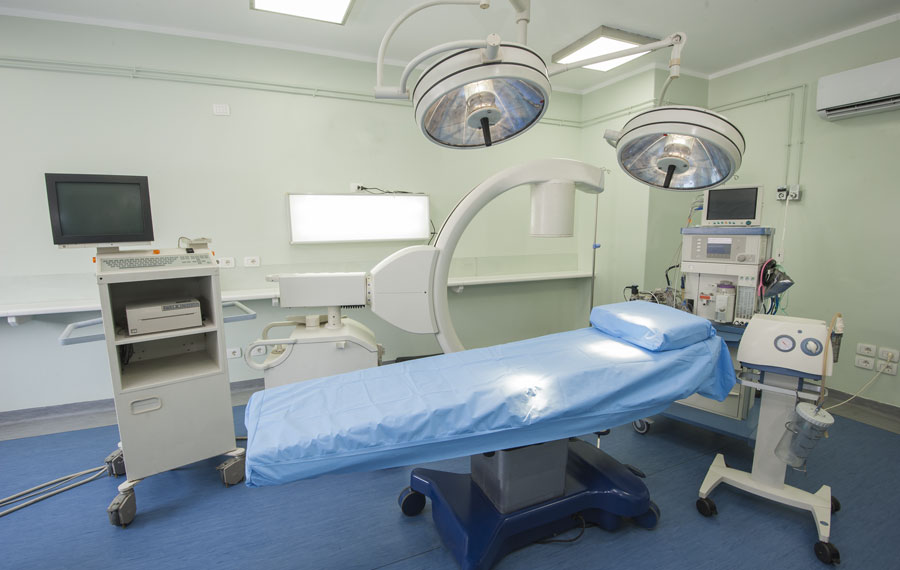
WASHINGTON, D.C. – The Trump administration cleared the way Monday to immediately use outpatient surgery centers, inpatient rehabilitation hospitals, hotels and even dormitories as makeshift hospitals, health care centers or quarantine sites during the coronavirus crisis.
The Centers for Medicare & Medicaid Services announced it is temporarily waiving a range of rules, thereby allowing doctors to care for more patients.
Hospitals and health systems overwhelmed with COVID-19 patients will be able to transfer people with other medical needs to the nation’s 5,000 outpatient surgery centers, about half of which are affiliated with hospitals. This will give the country thousands of additional hospital beds and operating rooms, some of which have ventilators or anesthesia gas machines that could be repurposed as ventilators.
Outpatient surgery centers will be allowed to treat patients with other critical needs — such as serious injuries, cancer or heart attacks — unrelated to COVID-19, allowing hospitals to conserve scarce resources and reduce the risk of infection to these patients.
Until now, federal regulations allowed outpatient surgery centers to care for patients for a maximum of 24 hours.
“Transferring uninfected patients will help hospital staffs to focus on the most critical COVID-19 patients, maintain infection control protocols, and conserve personal protective equipment,” the agency said in a statement.
Many outpatient surgery centers had closed after being told to halt elective procedures. A coalition of anesthesiologists in recent weeks called for them to stop performing nonessential surgery and assist hospitals.
The waivers “will allow hospitals to save more lives” by performing “surgeries and procedures that can’t wait until the pandemic is over,” said Bill Prentice, CEO the Ambulatory Surgery Center Association, an industry group.
Before the CMS announcement, the California Ambulatory Surgery Association had expressed its willingness to help.
The outpatient centers “want to be part of the solution as the entire healthcare industry must rise to meet this enormous challenge,” said Michelle George, president of the California Ambulatory Surgery Association, in a statement issued Monday morning. “We have valuable resources to lend to this crisis — whether it is staff, space, equipment, supplies or other capabilities. ASCs are coordinating with the public health teams on local and regional levels to identify how their facilities can be utilized most effectively on a case by case basis.”
Advocates who have pushed for surgery centers to assist hospitals praised the move.
“This is a great step in fighting this pandemic,” said Dr. Adam Schlifke, an anesthesiologist and clinical assistant professor at Stanford University in California.
“We recognize that it’s going to be hard,” Schlifke said. “It’s extremely complicated, but we are here to support all the surgery centers that will need to convert as a result of this order.”
The waivers will allow hospitals to hire local physicians and health care providers to address potential surges; transfer critical equipment, including telemedicine equipment, to doctors’ offices; and provide meals and child care for their health care workers.
Hospitals will be able to triage sick patients at community locations, then send them to the most appropriate facility, according to CMS.
“Front-line health care providers need to be able to focus on patient care in the most flexible and innovative ways possible,” said CMS Administrator Seema Verma. “This unprecedented temporary relaxation in regulation will help the health care system deal with patient surges by giving it tools and support to create nontraditional care sites and staff them quickly.”
Even with additional facilities, hospitals and health care systems could run out of staff, especially as health providers become sick with COVID-19. Although surgery centers typically employ their own nurses, they tend to share surgeons with local hospitals.
More than a dozen states and health care associations had requested waivers. The CMS move means that other states will no longer need to apply for waivers.
Texas had taken the lead in recent days, even before the new announcement, by permitting hospitals to use off-site facilities. Texas Gov. Greg Abbott last week signaled his interest in using outpatient surgery centers to expand care by ordering them to tell the state how many ventilators they possess.
Among other sweeping changes:
- Ambulances will be allowed to transport patients to outpatient surgery centers, community mental health centers, federally qualified health centers, physician’s offices, urgent care facilities and any locations furnishing dialysis services when a dedicated kidney failure treatment center isn’t available. Hospitals will be able to charge for services provided outside their four walls and emergency departments can use telehealth services to evaluate sick people.
- Physician-owned hospitals can temporarily increase their number of licensed beds, operating rooms and procedure rooms, according to CMS.
- Instead of going to crowded emergency rooms, patients could go to off-site locations to be evaluated by emergency health care providers using telemedicine. That change will help preserve space in the emergency room for those who need it most. CMS will allow health providers to treat more patients via apps or telephone and bill at the same rate as in-person visits.
- Physician assistants and nurse practitioners will be allowed to order tests and medications that may have previously required a physician’s order, as long as state law allows it. Also, certified registered nurse anesthetists will no longer have to work under the supervision of a doctor, freeing up physicians to focus more on patients and less on supervising.
- To reduce the need for patients with health problems unrelated to COVID-19 to go to a doctor’s office or hospital, doctors will be allowed to monitor patients remotely with devices that can measure a patient’s oxygen saturation levels using pulse oximetry.
Health care experts have been suggesting the administration offer such waivers for weeks. The country has “got to muster all reasonable facilities and personnel,” said Arthur Caplan, a bioethics professor at NYU Langone Medical Center. “The best way to ration is to avoid it by stretching resources and sharing.”
Cara Anthony from Kaiser Health News contributed to this report.



Comments are closed.